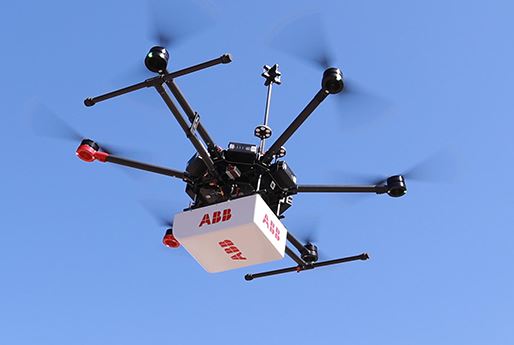The ABB Hoverguard Promises To Catch Methane Leaks Faster And More Efficiently

ABB, the Swedish-Swiss Power Major has just released HoverGaurd- a mobile gas leak detection system. It is the company’s third product which facilitates the reliable detection of greenhouse gas emission, and is part of the set that also offers the vehicle-based MobileGuard, the hand-held MicroGuard, and the upcoming stationary EverGuard which will be launched this year.
The launch follows the passing of the Protecting Our Infrastructure of Pipelines and Enhancing Safety (PIPES) Act, signed into law in the US on December 27, 2020, to combat methane leaks across the nation. The PIPES Act, aiming to ensure environmental and pipeline safety, mandates the use of advanced leak detection technology by gas pipeline operators since, according to the US Energy Information Administration, the majority of gas shipments in the country take place using its pipeline infrastructure.

Methane, for those who may not be aware, is actually a huge factor in global warming, owing to the fact that it can cause 86 times more warming than a tonne of CO2 or carbon diaxide. More importantly, since it is used as an effective fuel actually, preventing its leakage and wastage can actually pay back the costs involved in detecting and preventing such leakages. The International Energy Agency (IEA) estimates that 75% of emissions from the oil and gas sector—some 16.5% of total human emissions—could be avoided with technologies available today, and that 40% (9% of total human emissions) could be eliminated at no net cost.
ABB’s HoverGuard uses an Unmanned Aerial Vehicle (UAV) to detect, quantify, and map leaks up to 300 ft from natural gas distribution and transmission pipelines, gathering lines, storage facilities, and other potential sources. Further, its automatically generated comprehensive digital reports summarise results and can be shared within minutes after a survey. The cloud-connected system also provides individual data regarding two other greenhouse gases- water vapour and carbon dioxide- which are present in the environment in varying amounts, each having differing effects. This information is significant for scientists and researchers who study the nuances of complex climatic and environmental phenomena and their problems.
With developed countries prioritise maintaining their existing high living standard, and developing and underdeveloped countries prioritise achieving the same, the carbon-dioxide emitting industries are not likely to undergo a decline any time soon. But curbing the emission of methane- a potent greenhouse component- seems more feasible, at least in the short run.
The Climate and Clean Air Coalition, a collaboration of governments and environmental lobby groups, has estimated that halving anthropogenic methane emissions over the next 30 years could reduce average global temperature by 0.18°C in 2050. A seemingly small number, it is actually between 20% and 45% of the gap between current temperatures and the 2015 Paris Agreement target, signed by most countries, of stabilising temperatures between 1.5°C and 2°C above pre-industrial averages. Thus, a technology that can source individual gases, the way HoverGaurd can, would accelerate research and policy initiatives necessary to deal with climate change. Not to mention its ability to find ‘cheats’ in the form of oil firms that are causing more environmental damage than they admit to.
Hoverguard uses a cavity-enhanced laser absorption spectroscopy for detecting methane. The company says that the sensitivity of the detection system and its speed enable the product to detect leaks while flying at altitudes of 130 ft or higher and at speeds greater than 55 mph. Due to operating on low-cost commercial UAVs which can carry a payload of 6.6 lbm, the system can cover large areas quickly, possibly 10-15 times more land than competing old technology could. According to Dough Baer, global product line manager of laser analysers at ABB, HoverGaurd’s groundbreaking success lies in its elimination of the need for previously used slow, qualitative, analog sensors or expensive delicate cameras to find leaks. He claims that their product effectively detects and maps natural gas leaks around hard-to-reach sites such as bridges, areas with right-of-way restrictions or vegetation coverage and storage assets.




